On A Mission
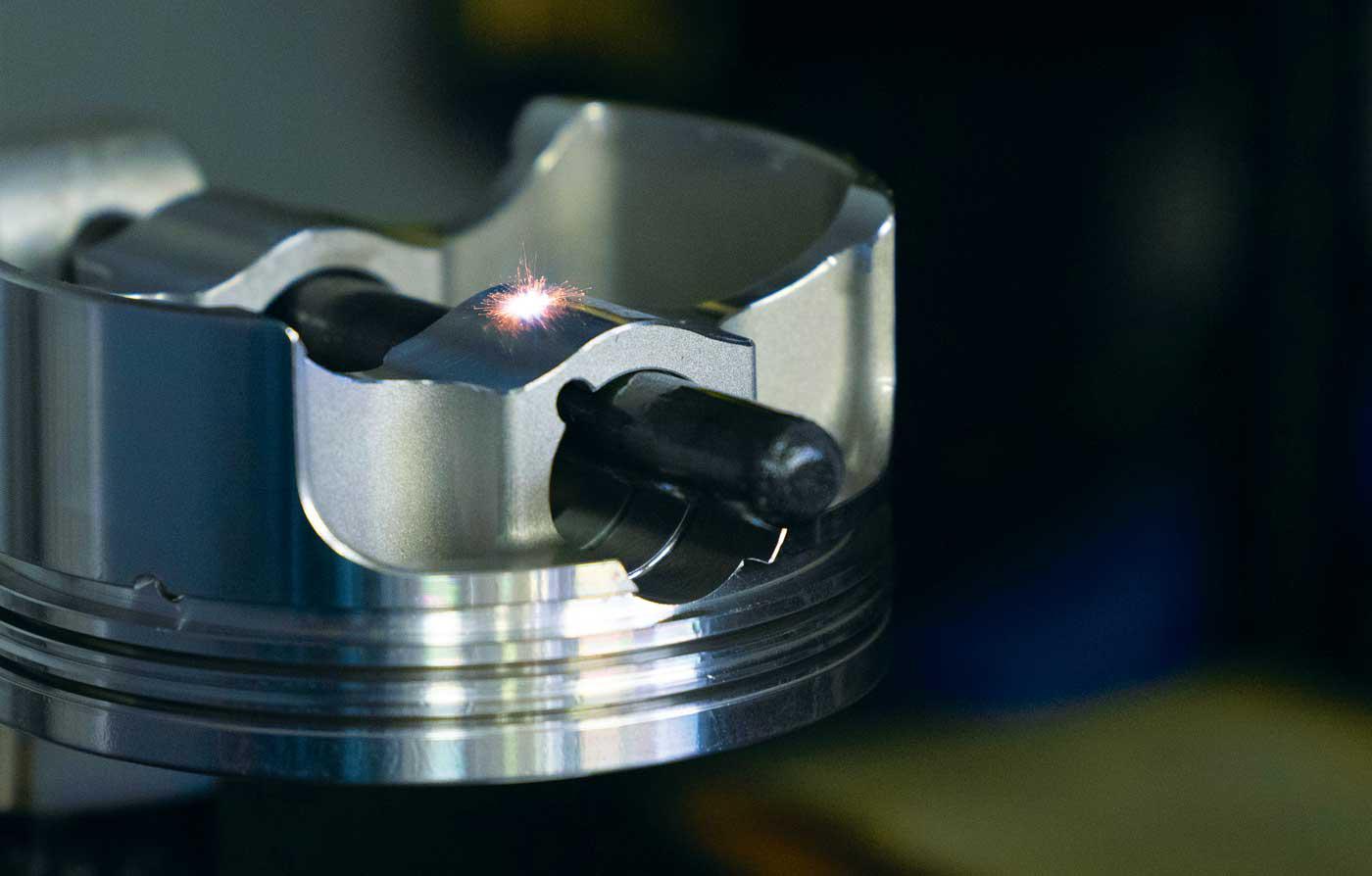
Piston manufacturers are racing to expand lines, keep orders moving, and push the envelope with new materials, all while an unconventional technology draws renewed interest.
Golf-ball-like dimples on the top face of a race piston is a technology that has been around for decades, and every so often these seemingly random craters on the crown draw attention at engine seminars or in motorsports chat rooms. Theories about improved combustion efficiency and manipulating the flame front have been debated and most likely tested by leading engine builders. However, no piston company has promoted the quirky science and marketed off-the-shelf product with dimples.
So it was no surprise that Daniel Schierholt was hesitant to try dimpling the pistons on the 506-cubic-inch B1 Mopar that powers his Super Pro ET dragster. (Schierholt is the engineering manager at piston manufacturer UEM/Icon in Carson City, Nevada.) The company recently partnered with Speed of Air (SoA) Engine Technologies in Reno, Nevada, to use SoA’s patented dimpling technology on a new line of Hyperformance pistons for diesel engines.
Field testing with DFC Diesel in Canada revealed promising results, so dimpled pistons will be available for select diesel applications through UEM/Icon and under the SoA brand. Icon had also worked with California dirt-track racer Bobby Hogge to provide dimpled pistons for his Chevy small block. Again, improved performance was reported.
“If it works with diesel and gas, let’s try drag racing and methanol,” said Schierholt, who switched out the 4.355-inch-bore Icon pistons on his engine with no other changes. “My motor was at 14.5:1 compression ratio. With the dimples it dropped down to 14.32:1.”
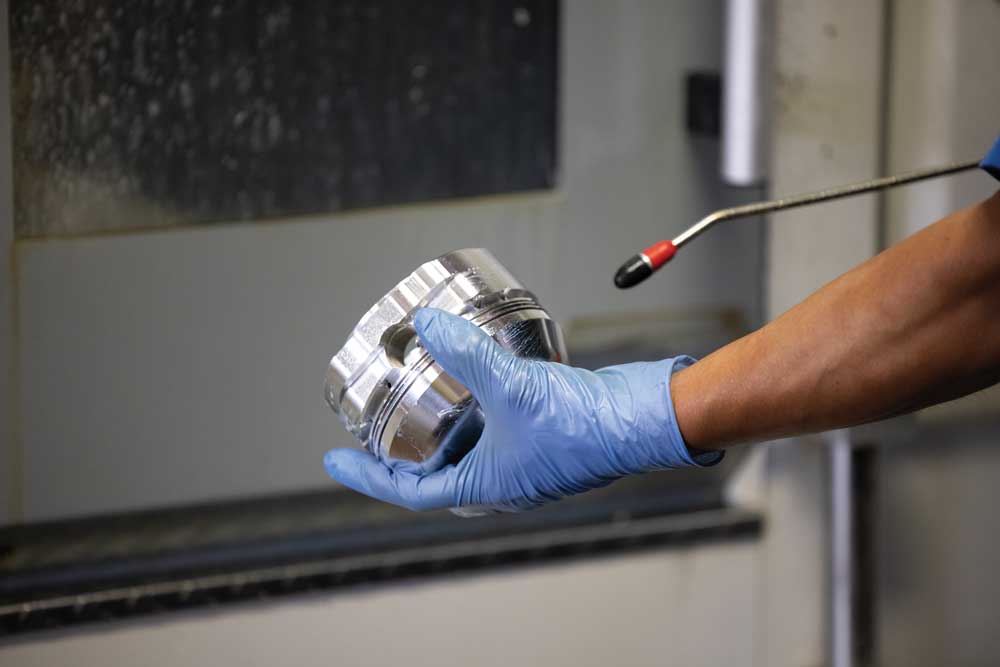
Schierholt compared time slips on days with near-equal track and air conditions. On each run the car was launched at 5,000 rpm and shifted at 6,800 rpm. The 60-foot times were down slightly with the dimpled pistons, but the car picked up acceleration through the remainder of the run and finished the quarter-mile .16 second quicker and 3 mph faster on the top end.
“As a driver, you can feel it making more power, more torque,” said Schierholt. “Also, the engine is using about an eighth- to a quarter-gallon less per run.”
While SoA and UEM/Icon are capitalizing on an off-beat cyclical technology that is showing promise, other piston manufacturers are busy keeping up with demand, freshening some popular parts, and creating new lines of product to give the racer and street enthusiast smarter choices. PRI Magazine recently sampled a number of piston companies and found new engines and applications are the prime forces moving development these days.
Active Development
Most experienced engine builders already have a good idea of the piston design, construction, and features that suit their programs. Unless rules change or racers apply more boost than they told their tech reps—which certainly would drive new product—aftermarket piston programs remain healthy, and most engineering divisions are once again active in developing new innovations.
“We’re constantly changing the lineup. It just depends on what’s in demand,” said Alex Gonzalez of RaceTec Pistons, Huntington Beach, California, adding that racers have their own preferences on piston options. “Sometimes it’s just an upgraded wrist pin, or gas porting the pistons, or making them lighter. It just depends.”
“Pretty much everything we have now has been fully maximized to suit today’s modern technology,” said Nick Diaz of CP-Carrillo, Irvine, California. “The only project in development that I can talk about now is a Godzilla line of pistons and rods.”
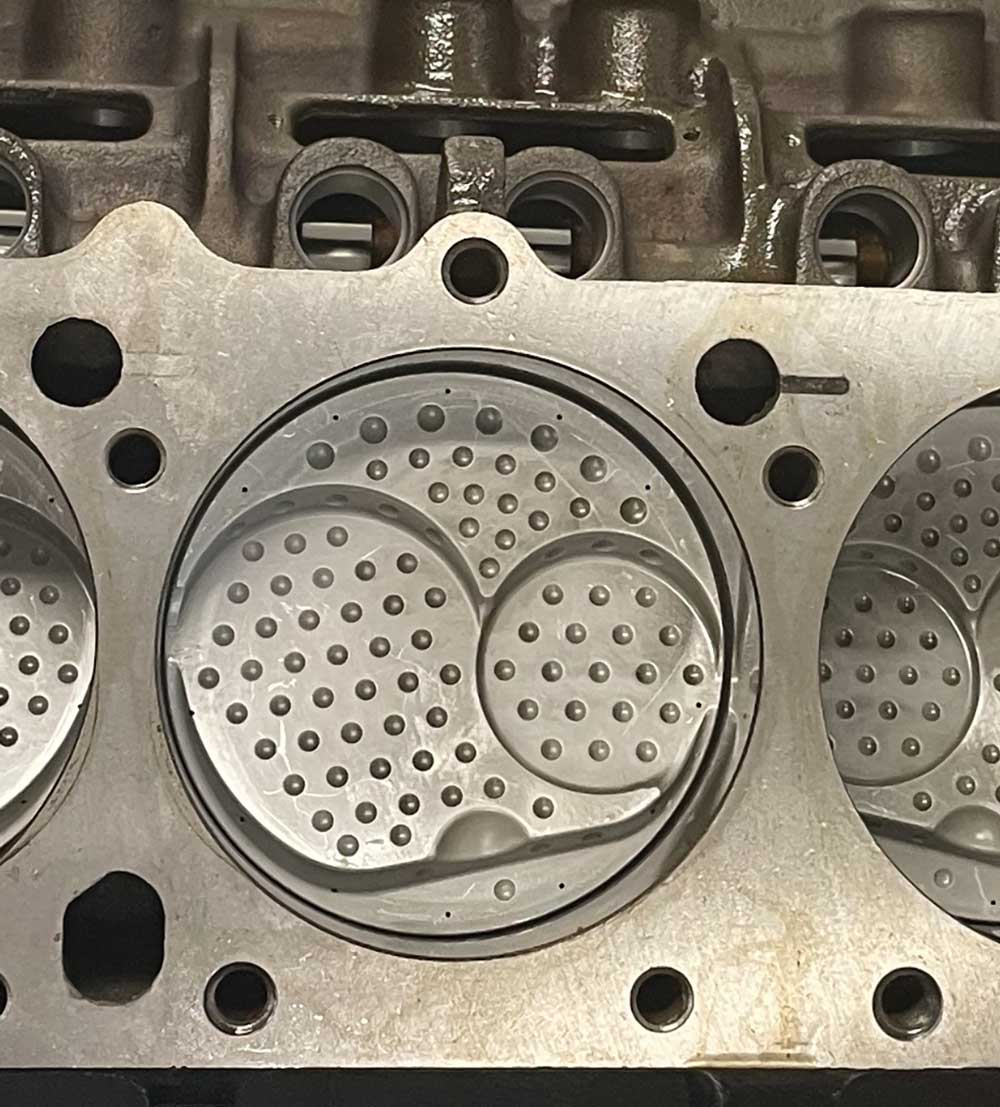
Over at Race Winning Brands (RWB) in Mentor, Ohio, which oversees Wiseco, JE Pistons, Diamond, and Manley pistons, Diamond is looking at adding product for European exotic and high-performance applications, while Manley continues to offer shelf-focused solutions.
“Wiseco will be launching a new RED series—the acronym stands for Race Engineered Design,” said Scott Highland of RWB.
“JE has the SRP Pro 2618 line, which offers customers a similar solution and has been expanded with quite a few more part numbers for LS, Ford Modular, and Gen 3 Hemi applications,” added RWB’s Kevin Bailey.
There’s even a little taunting going on when the topic of new materials comes up. “We can’t speak on it, but we’ve worked with professional race teams and exotic materials—materials that wouldn’t be considered the norm in modern engine building,” teased Joe Maylish of MAHLE Motorsports, Fletcher, North Carolina.
The dimples, however, are igniting new discussions among racers, and both Schierholt and SoA’s Chris Parkhurst stressed that there is a science behind the technology. The diameter, depth, and placement of the dimples were tested extensively in computer simulations to develop the strategy.
“It’s not that you just start putting dimples across the face of the piston,” explained Schierholt. “We look at flame travel, location of valves, spark versus compression ignition, the type of fuel, and that will dictate where the dimples go.”
“Dimpled pistons have been around for a long time, but it was sort of trial and error,” said Parkhurst. “We got into some pretty advanced computational fluid dynamics to optimize designs. There’s a reason for every dimple we put on a piston, where we put it, and why we put it there.”
The SoA strategy for the diesel pistons also includes a mixture of thermal and anti-friction coatings. “We use coatings for the same reasons that anybody else is using coatings for the most part. However, there’s an interrelationship between the fluid dynamics and the thermodynamics of what’s going on in an engine,” said Parkhurst. “One influences the other. This is where people get kind of sideways with our technology. They just see dimples.”
SoA’s research into the dimple technology started as a way to reduce NOx emissions and improve fuel economy for large fleets. “Racing was never the goal,” said Parkhurst. “We’re a green engine company, and we’ve made a more efficient combustion event with all fuels. The additional horsepower, the additional benefits don’t cost anything. We don’t bolt anything to the engine. At the end of the day, it’s still just the piston.”
For CP-Carrillo, it’s also the connecting rod. The company is looking to expand piston-and-rod packages that are matched for different racing applications.
“Since we are a manufacturer of the rod and the piston, we have great insight and a vast knowledge of how those components can function together in those high-stress environments,” said Diaz. “We’re doing a lot of titanium now with our connecting rod line, and we have a new high-grade steel that’s available now that is 30% stronger than our standard steel. It’s a tremendous upgrade for high-end road racing or drag racing.”
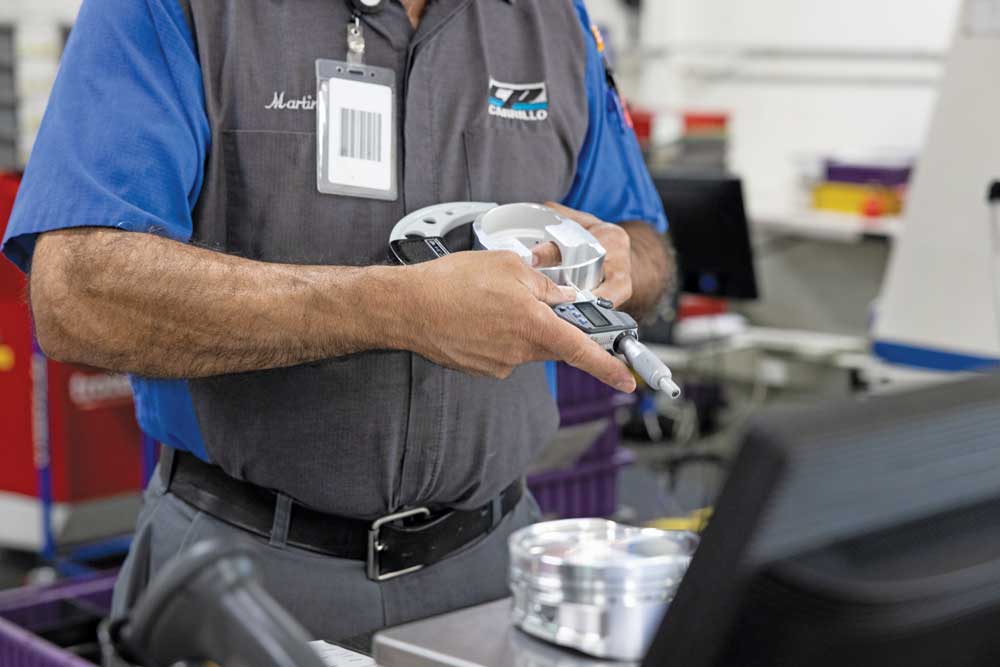
Some of the new CP-Carrillo pistons soon to be mated with a complementary rod will cover options for the Ford 7.3-liter Godzilla engine. The company is working with a professional race shop on the development, and Diaz said two bore sizes will be available: standard and +.025.
“They’re designed for the 1,500- to 1,800-horsepower range,” added Diaz. “They’ll be available on our off-the-shelf Bullet series.”
Addressing higher horsepower, Diaz said the company is working closely with racers to build pistons suited to higher boost applications. “They communicate to us exactly what’s going on with their setup, how their engine’s performing, and we try to analyze that data to build better parts,” said Diaz. “Ultimately that information trickles down to our shelves. If we find something that’s working in a 4,000-hp Pro Mod car, it’s going to trickle down to the sportsman racer, eventually.
“We go over the customers’ needs and ambitious goals,” continued Diaz. “We need to extract as much detailed information from the customer as possible to ensure the block height, stroke, and rod length will yield enough strength for their expected horsepower.”
With any new knowledge comes the opportunity to overhaul an existing product. MAHLE Motorsports recently redesigned its venerable small block Chevy dished piston.
“Here was a technology that’s been around for a long time, and we said, ‘How can we make it better?’ Then we did a complete redesign of the forging. We strengthened key areas, specifically around the pin bore, and just added mass in key areas,” said Maylish, adding that a similar upgrade was given to select Mopar big block pistons.
Trending Sales
A remarkable trend in the piston market these days is the expansion of off-the-shelf product. Custom pistons are still available within a reasonable turnaround time if there are no labor or materials shortages due to a pandemic. However, more performance and racing features are being engineered into affordable, durable products that can be shipped overnight, if needed. While some are direct shelf parts, others are “made to order,” meaning that all the engineering is in place, and pistons can still be produced and shipped in a timely manner.
The RED series at Wiseco illustrates this performance-and-value direction. Standard features include a 2618 alloy forging, skirt coatings, and a 1.5-mm, 1.5-mm, 3-mm ring package. They’ll be available for popular domestic applications in a variety of bore sizes and compression ratios.
“It’s for a drag race guy or a circle track guy who needs the strength and the features of a capable forged part, but it’s in a little bit more of a standardized fashion. So it can hit that middle-of-the-road use application,” said Bailey. “This will be Wiseco’s moderate to heavy-duty power capable performance and value part and can save customers from spending the extra money on pistons designed for severe-duty applications, like the Professional series, if they don’t need it.”
“We see the RED series in the 800–1,000-hp range,” added Highland.
In developing the SRP Pro 2618 series for JE Pistons, engineers adopted a similar strategy to give racers a budget piston capable of 800–1,000 hp. Within the JE SRP line, it fits on top of SRP and SRP Pro. It has standardized features like skirt coatings, pin oiling, and accumulator grooves.
“There is a variety of Gen III Hemi and Ford Modular available now under SRP Pro 2618, as well as an updated complete line of LS,” said Bailey. “LS has the longest list of numbers for varying engine generations and bore/stroke combinations.”
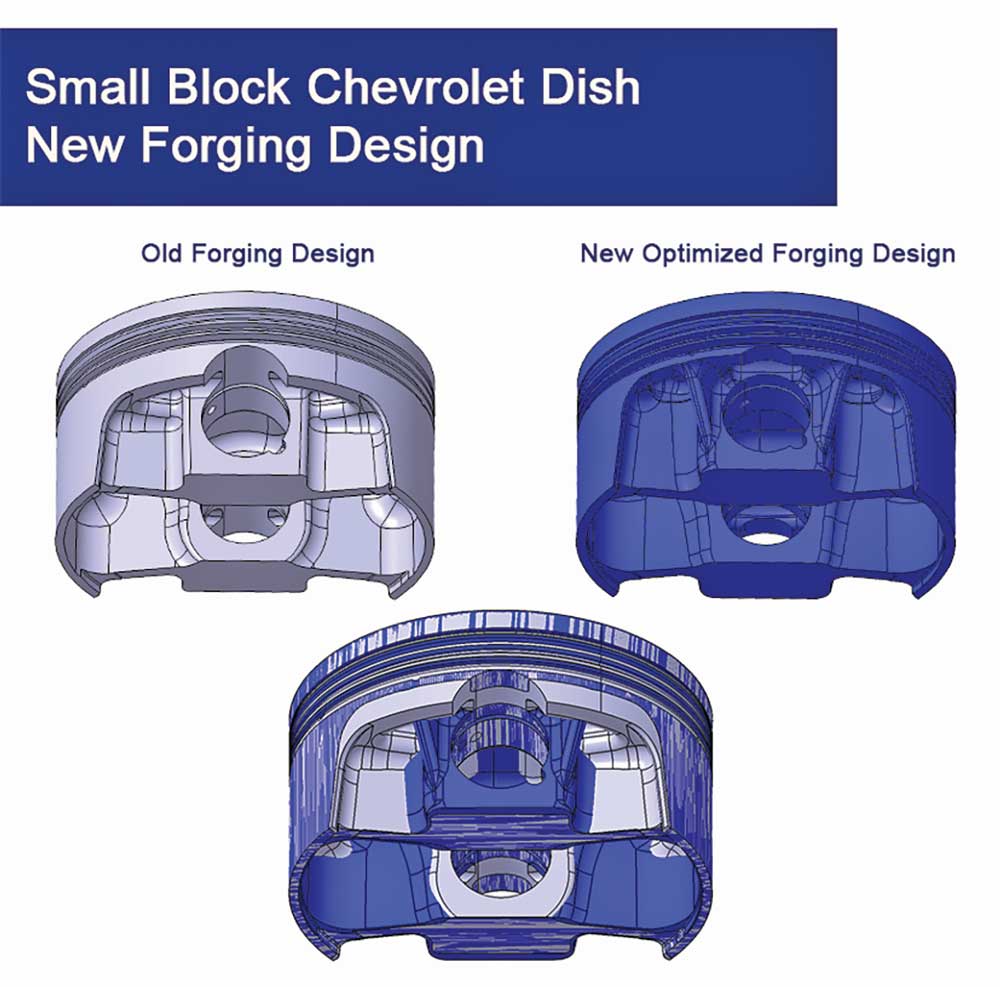
For the Diamond brand, the European and sport-compact market of Lamborghini, Audi, Nissan GT-R, and other performance models is growing at a rapid pace. “People are building billet blocks for these applications,” noted Highland. “It might be a V10 motor where they’re trying to watch the weight, or with power adders they have to have the piston mass in the right areas—you have to balance strength and weight.”
“It’s an expansion into serving the need in markets with really high horsepower,” added Bailey. “There’s 400 hp per cylinder in some sport-compact engines, and failure is not accepted.”
The wide range of pistons available from RWB is helpful to a racer stepping up through the ranks.
“Over the past couple of years, we’ve been helping Samantha Moore, who won the NMRA Limited Street championship a couple of times,” said Bailey. “She’s developing an increasing power level every year on the Coyote that she’s running. The first season she ran our JE Ultra series shelf part, but that ended up needing modifications into a custom part. Now she’s running a ProCharger, and there’s even more boost. So we had to build a custom version of the Ultra series with ring-land changes and other modifications, plus an upgraded set of rings, to be able to withstand extended use and keep sealing throughout the season in the high-horsepower conditions of her setup.”
As mentioned before, piston manufacturers are always looking at new materials, whether exotic alloys proprietary for a particular race team or improved alloys that can also help budget racer upgrades.
“We continue to investigate all types of alloys for pistons,” said Highland. “We’ve looked at metal matrix, obviously. Sure, there are rules concerns, but mainly it’s cost concerns. It’s not always just the material cost, but the machining technique, and the tooling you need is more expensive, There’s also crazy stuff like ceramic materials. We know they exist and do some development on different materials. But we haven’t found anything that really has outperformed 2618 for the money.”
Gathering Information
With more choices available to racers and street enthusiasts, company reps stress the importance of working closely with the phone techs and, most important, being honest with their expectations on the track.
“When some guys call up, they’re very excited because they’ve read something on a forum,” said Maylish. “They want to get, say, a 2618 alloy, anodized top-ring-groove piston for a hot rod that they’re building. Or they’re looking at a 4032 alloy and they want to put 25 pounds of boost to it. Both of which are incorrect in application. I think the main thing is that yes, business is booming, business is unbelievable. But as an industry, we have the responsibility to have conversations with our customers to ensure that they’re making the correct purchasing decisions. If you don’t and they choose the wrong component, it creates a bad experience, and there’s potential that they don’t want to come back and purchase your product.”
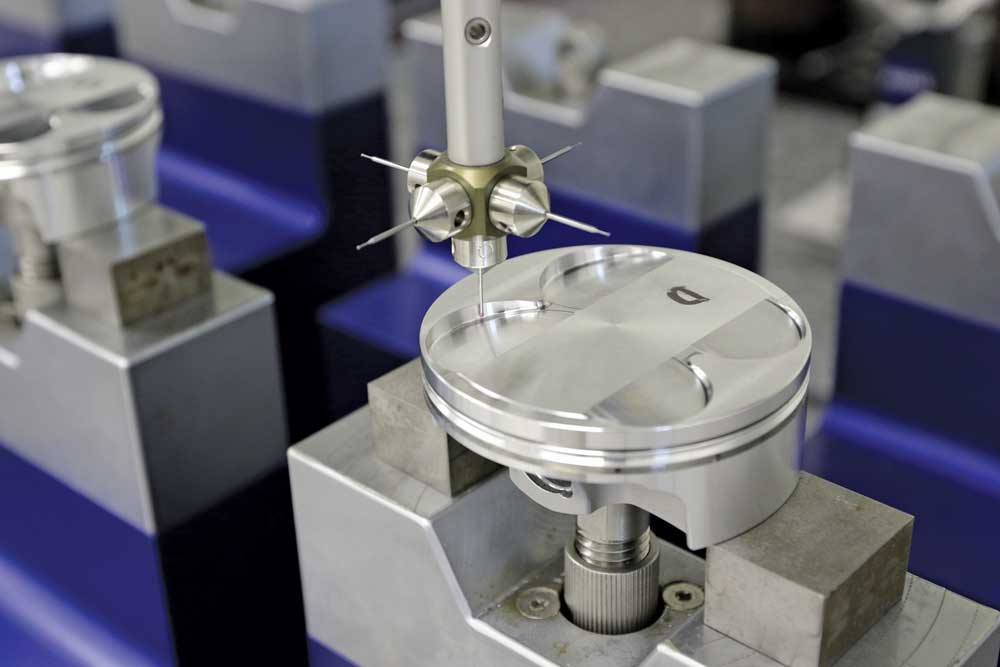
“We go over the customers’ needs and ambitious goals, and then we can try to fit them into a package,” explained Diaz. “Not everything is going to work all the time. That’s the tricky part. You’ve got to get all of that information into the computer and figure out the stresses of the certain components and where they can handle certain improvements.”
“All we can do is guide them,” said Gonzalez. “We can’t choose for them.”
Sources
CP-Carrillo
cp-carrillo.com
Diamond Pistons
diamondracing.net
JE Pistons
jepistons.com
MAHLE Motorsports
mahlemotorsport.com
Manley Performance
manleyperformance.com
RaceTec Pistons
racetecpistons.com
Speed of Air
speedofair.com
Total Seal
totalseal.com
UEM/Icon
uempistons.com
Wiseco Pistons
auto.wiseco.com
 MEMBERSHIP LOGIN
MEMBERSHIP LOGIN JOIN PRI
JOIN PRI


